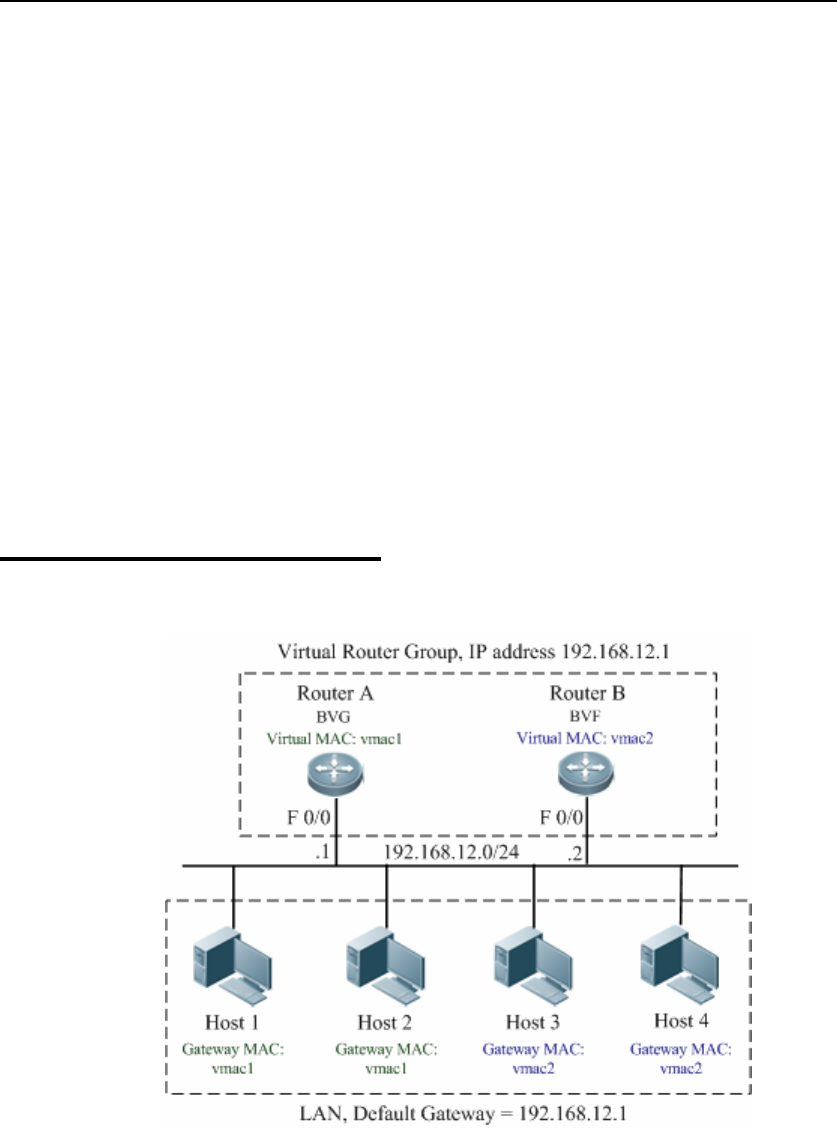
DES-7200 Configuration Guide Chapter 2 VRRP Plus Configuration
2-4
learned. The load balancing policy will only take effect after the gateway ARP
ages and the host sends out a new request for gateway address.
The interface will periodically send out gratuitous ARP. This feature will also
affect the load balancing function of VRRP Plus. When VRRP Plus is enabled,
the feature of gratuitous ARP sending will be blocked. When the virtual
address overlaps with the real address, it will stop sending gratuitous ARP
packets about this address.
When the address of a host conflicts with the address of this device, the ARP
module will also broadcast the gratuitous ARP packets about this address. If
the host address conflicts with the virtual address of VRRP Plus, then the
gratuitous ARP packets sent will lead to the circumstance that the MAC
address of host gateway is relearned, thus compromising the load balancing
function of VRRP Plus. In such a case, the load balancing function of VRRP
Plus is not supported for the moment.
2.3 VRRP Plus Application
The application topology of VRRP Plus can be illustrated in Figure 1:
Fig 1 Topology of VRRP Plus application
The IP network segment of the LAN as shown in Figure 1 is 192.168.12.0/24.
Two layer-3 devices (A and B) form a VRRP Plus group, with virtual IP being
192.168.12.1. Device A is the Master of VRRP acting as BVG, while device B
is the Backup of VRRP acting as BVF. Four hosts in the LAN all point to the
gateway of 192.168.12.1. When Host1 and Host2 send ARP requests to
gateway, the MAC address replied will be 0000.5e00.0101; when Host3 and


















